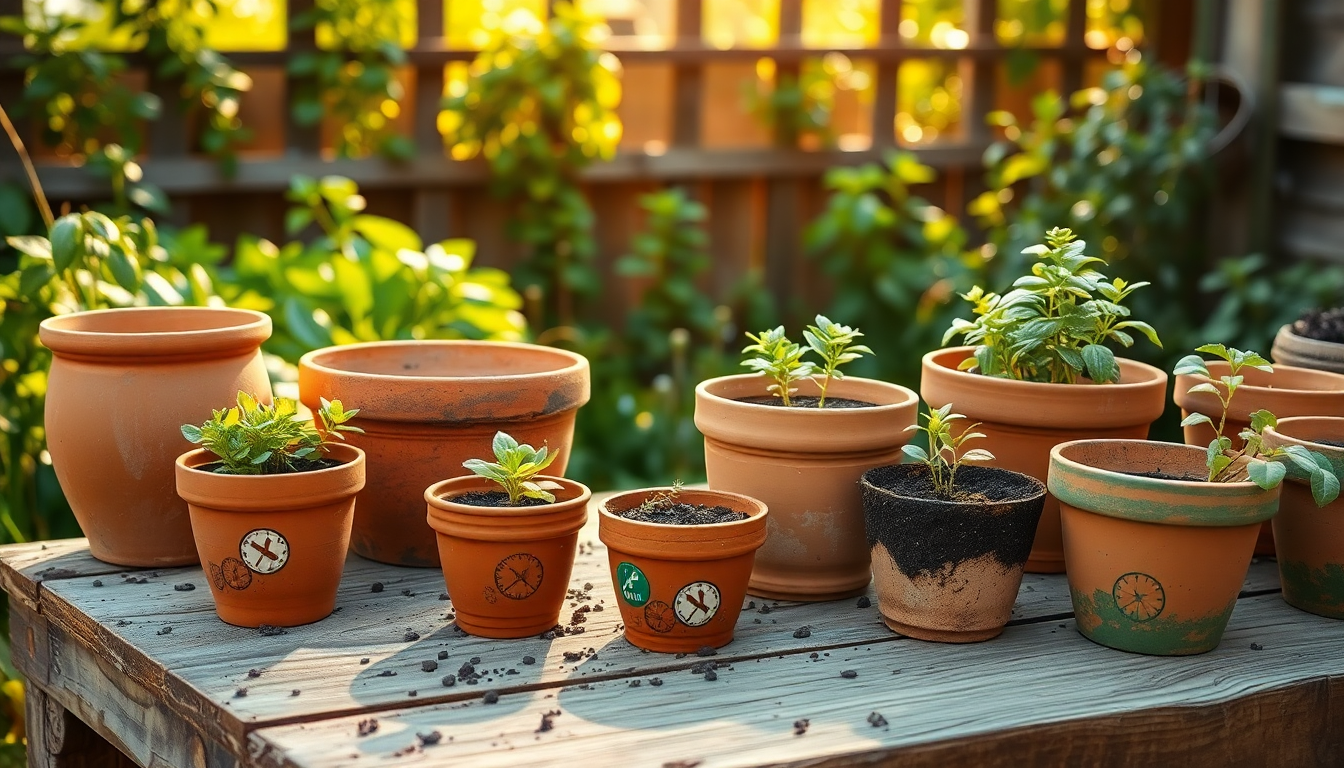Gardening in clay pots can be a rewarding and space-saving way to grow a variety of plants, from vibrant flowers to lush herbs and vegetables. However, even experienced gardeners can fall victim to common clay pot gardening mistakes that can hinder plant growth and health. In this comprehensive guide, we'll explore five of the most prevalent clay pot gardening errors and provide practical solutions to help you cultivate a thriving container garden.
Choosing the Wrong Pot Size
One of the most critical factors in successful clay pot gardening is selecting the appropriate pot size for your plants. Many novice gardeners make the mistake of using pots that are too small, which can severely restrict root growth and lead to stunted, unhealthy plants.
When choosing a clay pot, consider the mature size of your plant. As a general rule, the pot should be at least 2-3 inches wider in diameter than the root ball of the plant. This allows for adequate root expansion and ensures your plants have enough space to thrive. Overcrowding plants in a too-small pot can result in rapid drying, nutrient depletion, and even root rot.
Neglecting Drainage
Proper drainage is essential for the health of plants grown in clay pots. Without adequate drainage, excess water can accumulate in the soil, leading to waterlogged conditions that can suffocate plant roots and promote the growth of harmful fungi and bacteria.
To ensure proper drainage, make sure your clay pots have one or more drainage holes in the bottom. If your pots don't have pre-drilled holes, you can easily create them using a drill or a sharp object. Additionally, consider adding a layer of gravel or small stones at the bottom of the pot to further improve drainage and prevent soil from clogging the holes.
Failing to Amend the Soil
The soil you use in your clay pots is a critical component of a healthy, thriving container garden. Many gardeners make the mistake of using plain garden soil, which can become compacted and dense in the confines of a pot, depriving plant roots of the air and nutrients they need.
Instead, opt for a high-quality, well-draining potting mix specifically formulated for container gardening. These mixes are typically lighter and more porous than garden soil, allowing for better aeration and water drainage. You can also amend the potting mix with compost or other organic matter to improve nutrient content and water-holding capacity.
Overwatering or Underwatering
Striking the right balance between watering too much and too little is a common challenge for clay pot gardeners. Overwatering can lead to root rot and other fungal diseases, while underwatering can cause plants to wilt, become stressed, and ultimately die.
To avoid these issues, pay close attention to the soil moisture levels in your clay pots. Stick your finger into the soil up to the second knuckle – if the soil feels dry, it's time to water. Conversely, if the soil is consistently soggy, you may need to adjust your watering schedule or consider improving drainage.
Remember that the water needs of your plants can vary depending on factors such as plant type, pot size, and environmental conditions. Adjust your watering routine accordingly, and consider using a moisture meter to help you make more informed decisions.
Neglecting Fertilization
Clay pots can quickly deplete the available nutrients in the soil, as plants draw from a limited resource pool. Failing to fertilize your container plants can result in stunted growth, yellowing leaves, and overall poor performance.
To keep your clay pot plants thriving, incorporate a balanced, slow-release fertilizer into the potting mix at the beginning of the growing season. You can also supplement with a water-soluble fertilizer every few weeks to provide a steady supply of nutrients. Be sure to follow the instructions on the fertilizer packaging to avoid over-fertilizing, which can also be detrimental to plant health.
By avoiding these common clay pot gardening mistakes, you can create a lush, vibrant container garden that will bring joy and beauty to your outdoor space. Remember, with the right care and attention, your clay pots can become a showcase for your green thumb.
Conclusion
Gardening in clay pots can be a rewarding and space-saving way to grow a variety of plants, but it's important to be aware of the common mistakes that can hinder plant growth and health. By choosing the right pot size, ensuring proper drainage, amending the soil, maintaining the right watering balance, and regularly fertilizing, you can create a thriving container garden that will flourish for years to come.
At Idyl, we're passionate about helping gardeners of all skill levels achieve success with their clay pot projects. Visit our online store to browse our selection of high-quality clay pots, potting mixes, and gardening accessories, and take advantage of our bulk order discounts and expert gardening services. Together, let's cultivate the container garden of your dreams!


0 comments